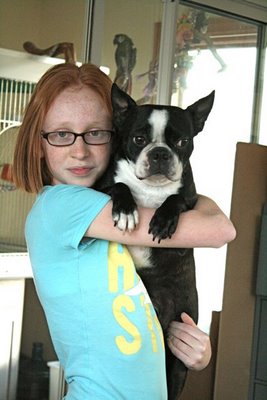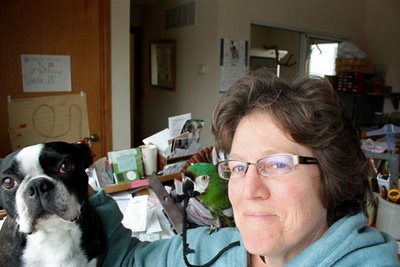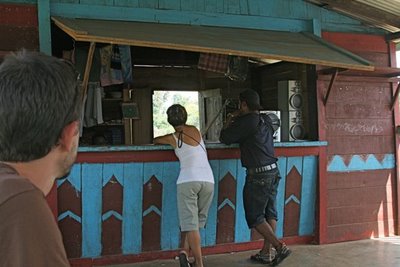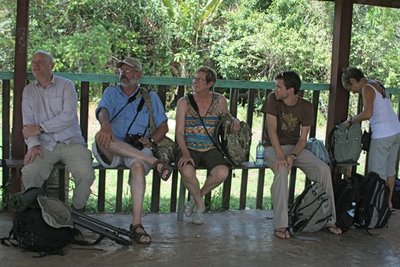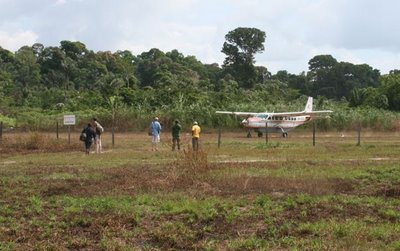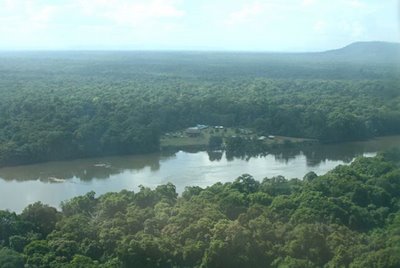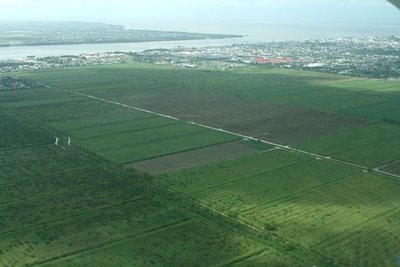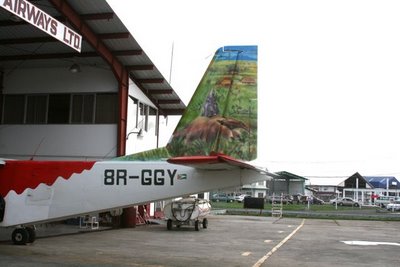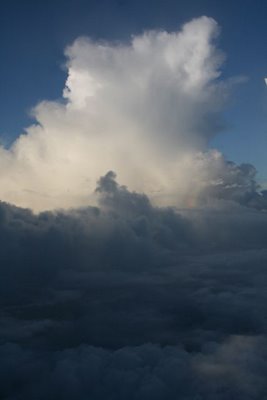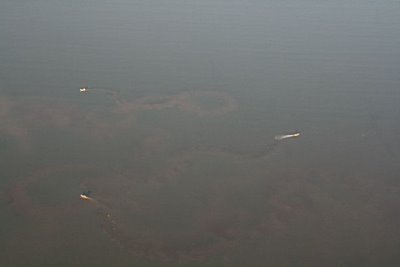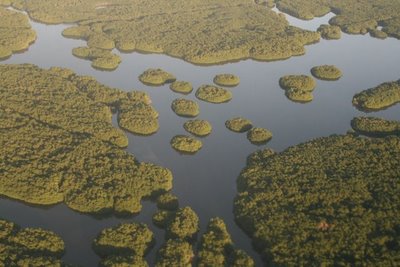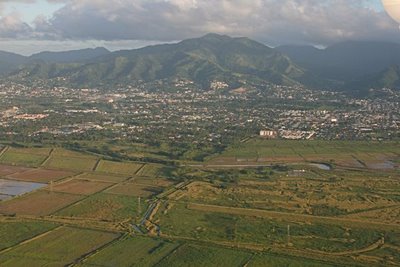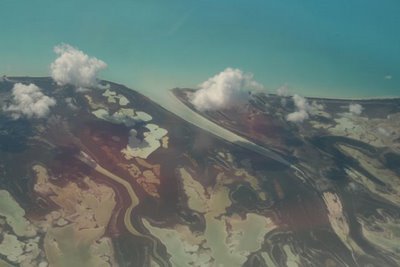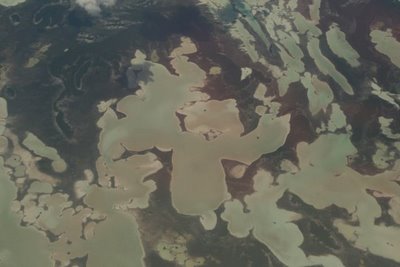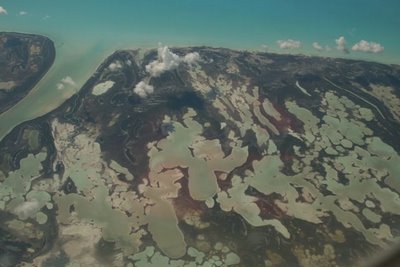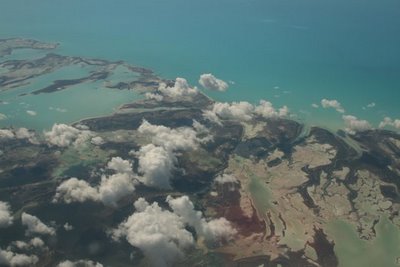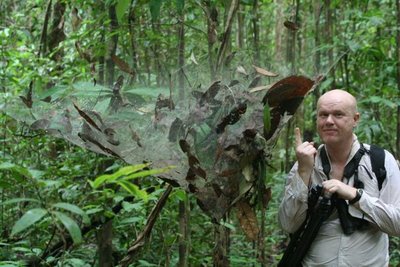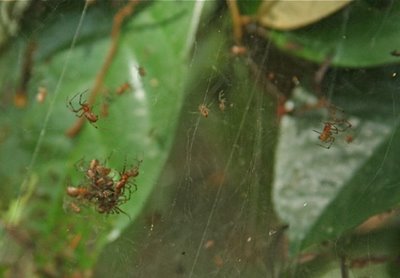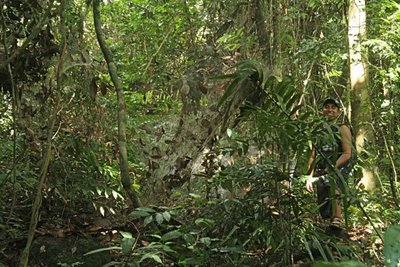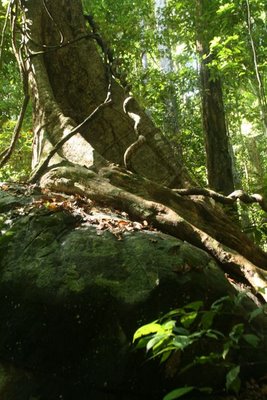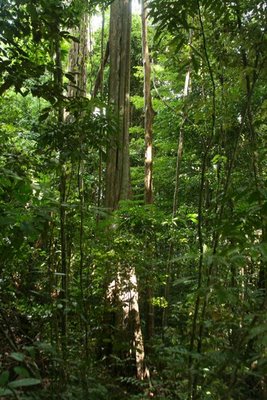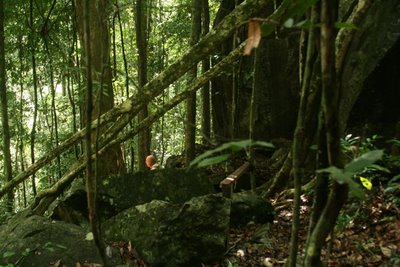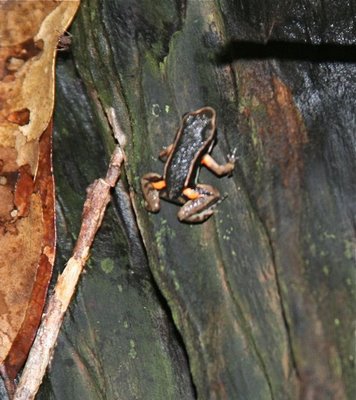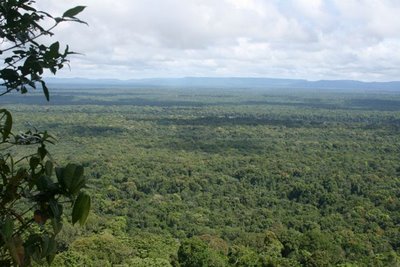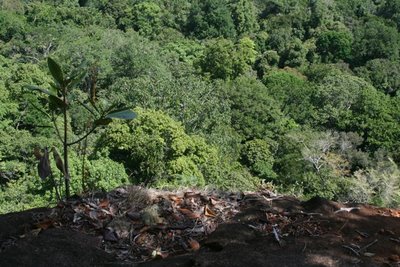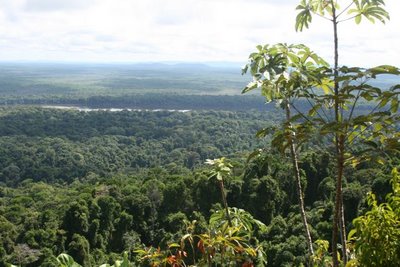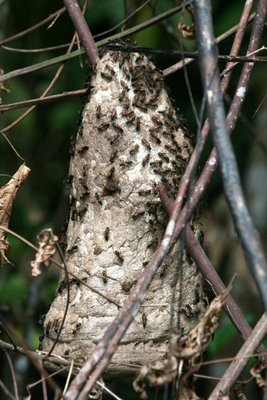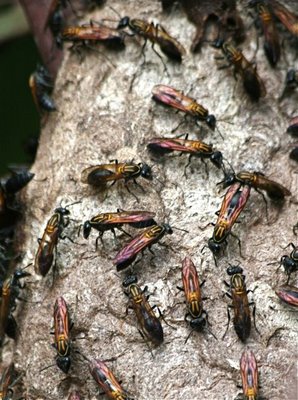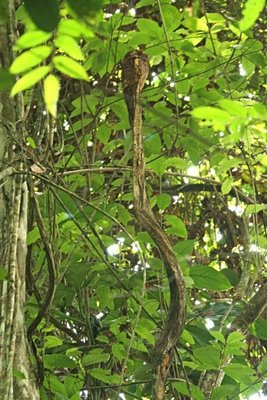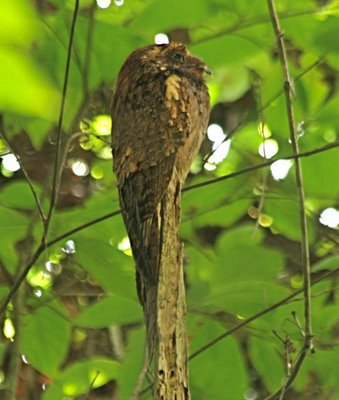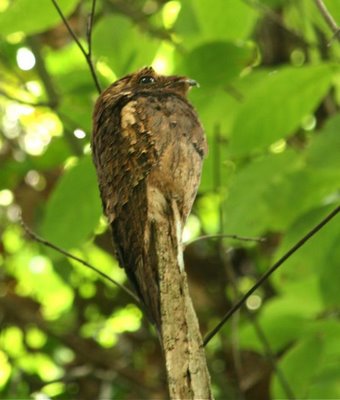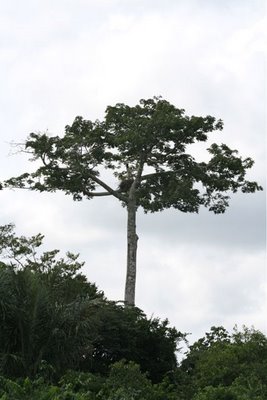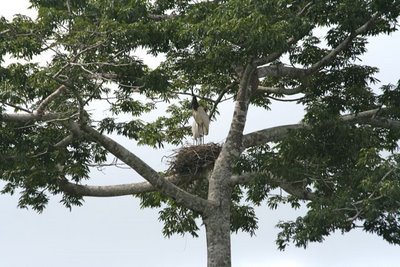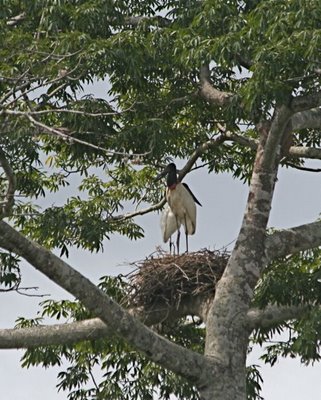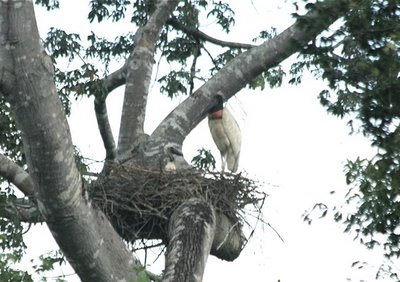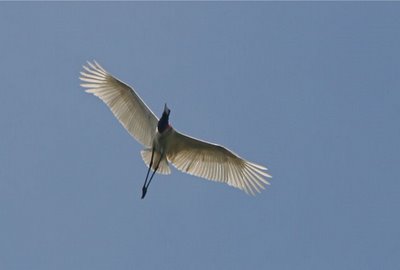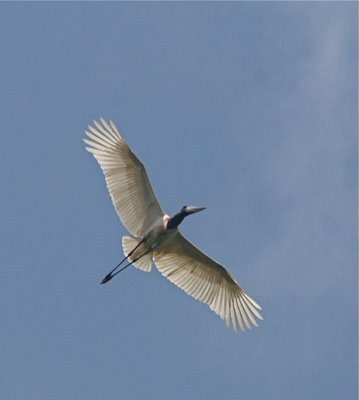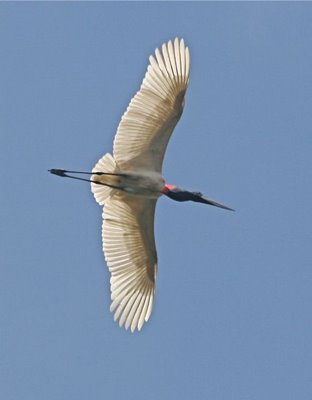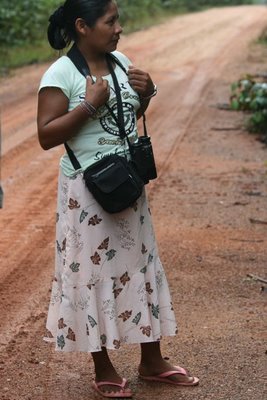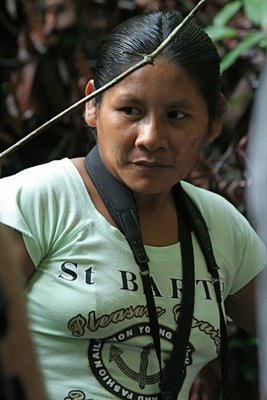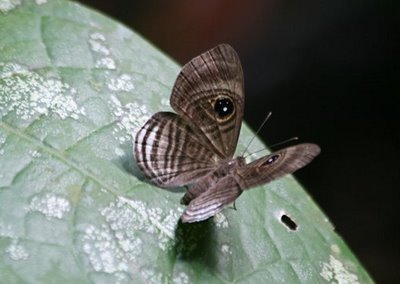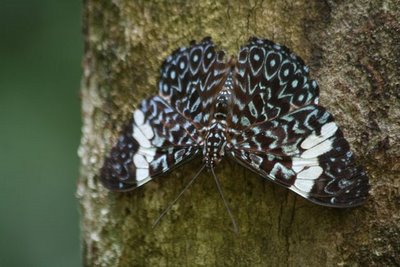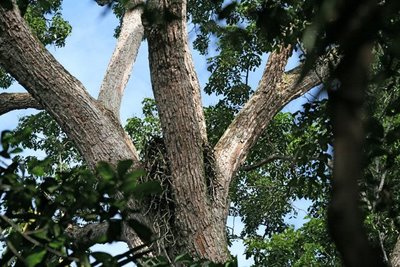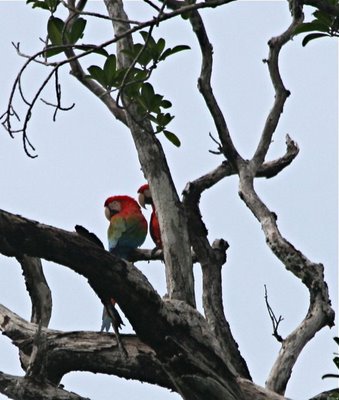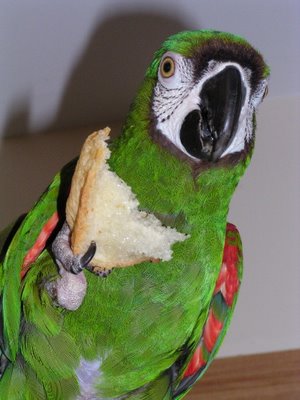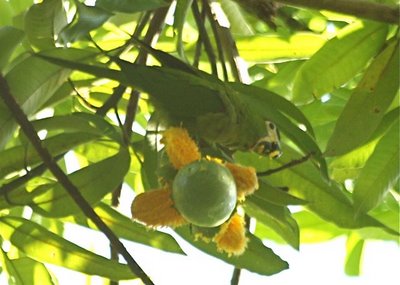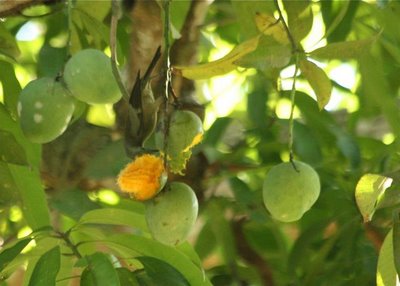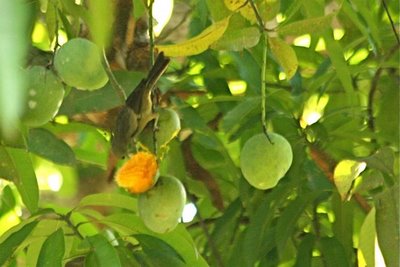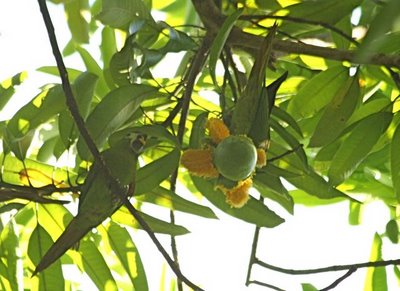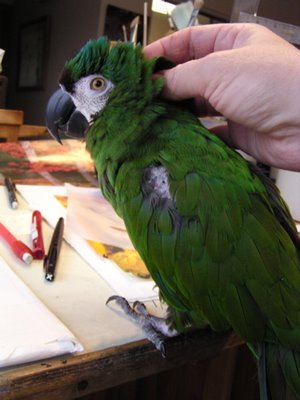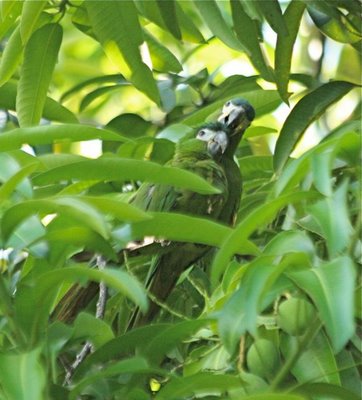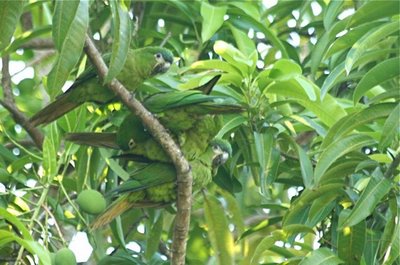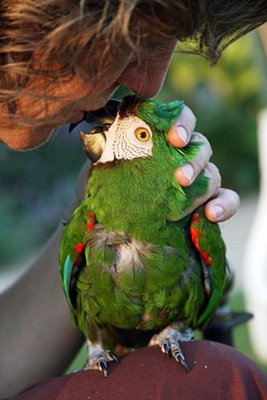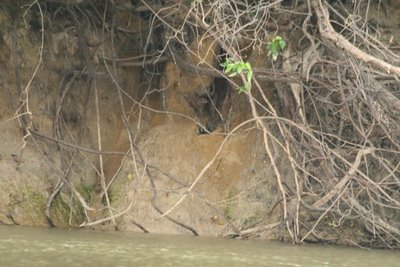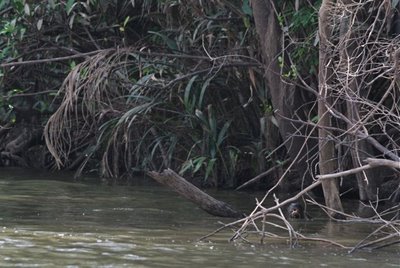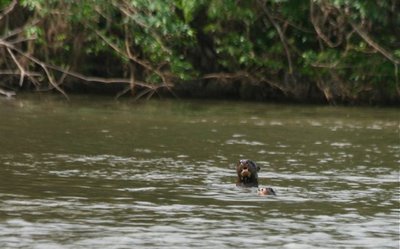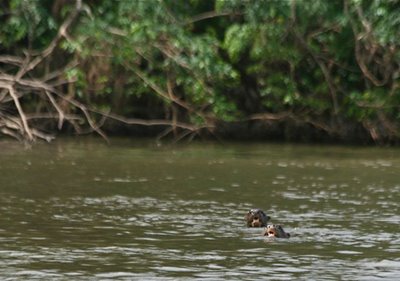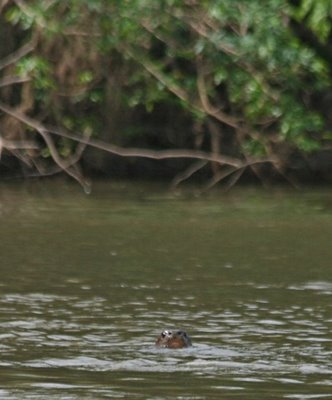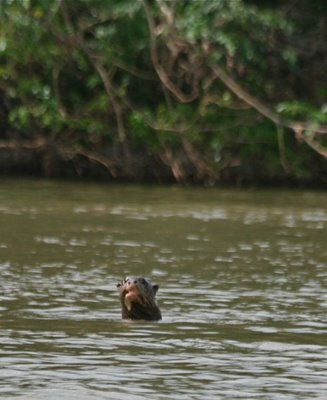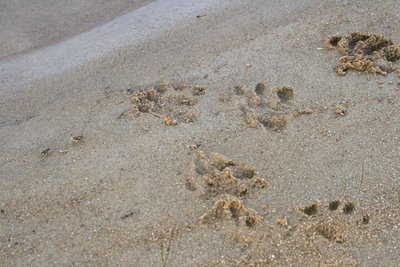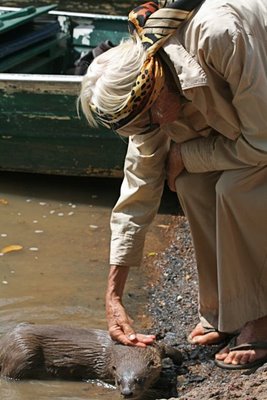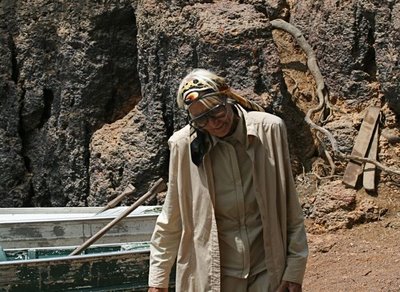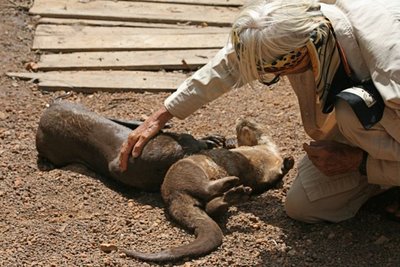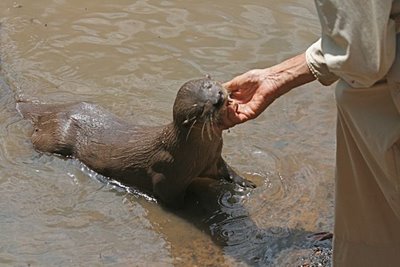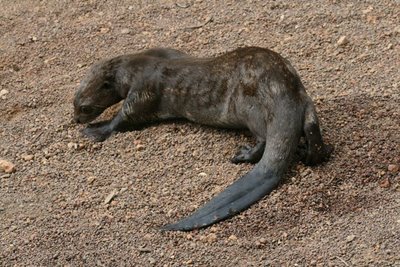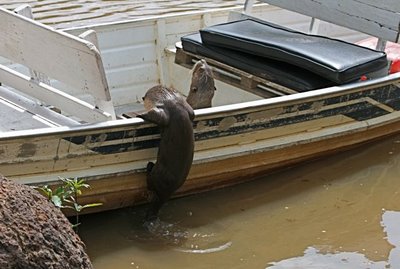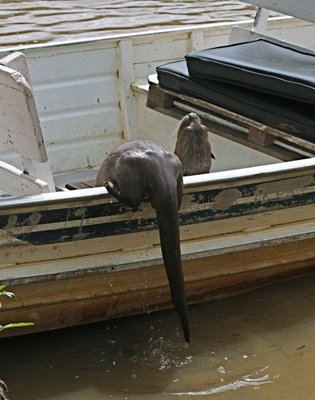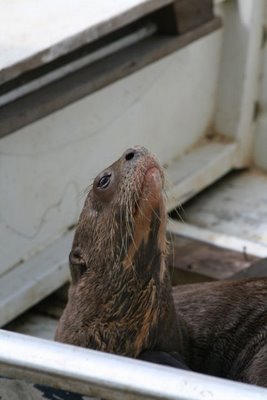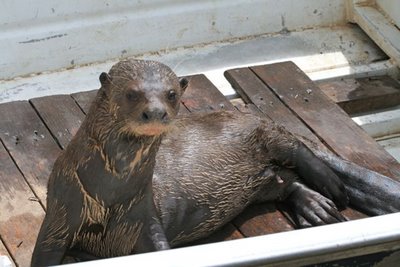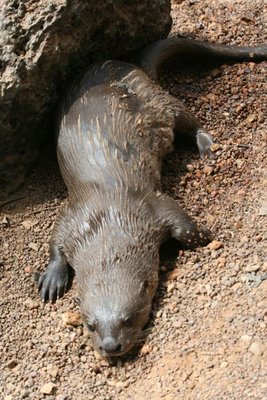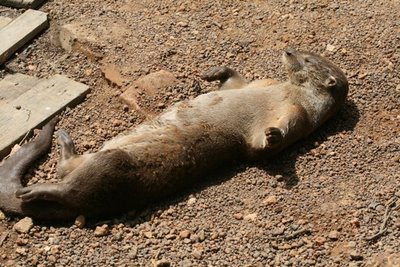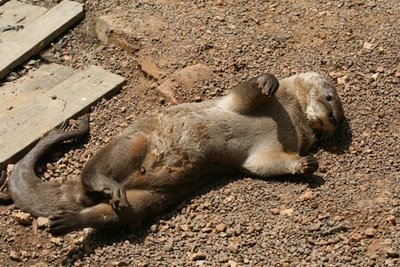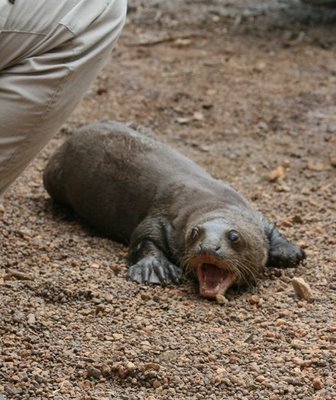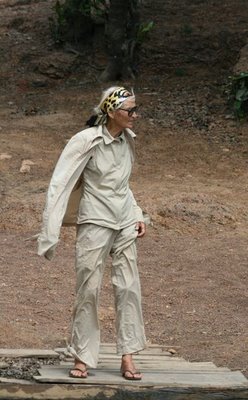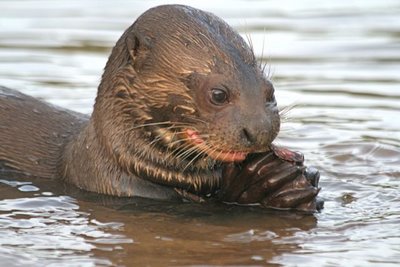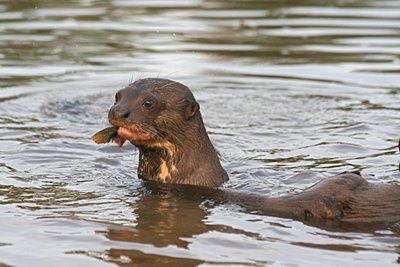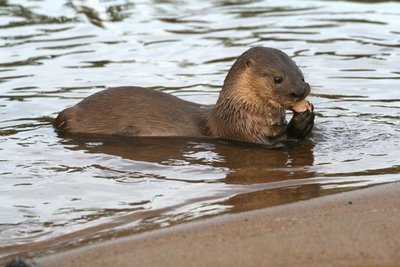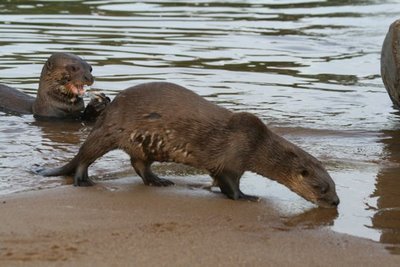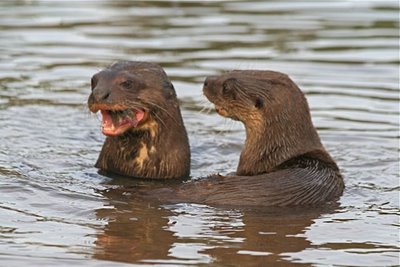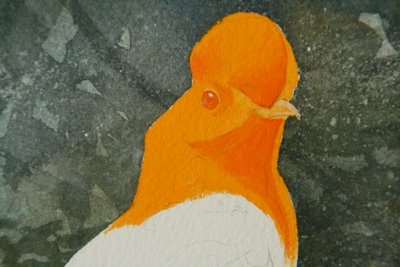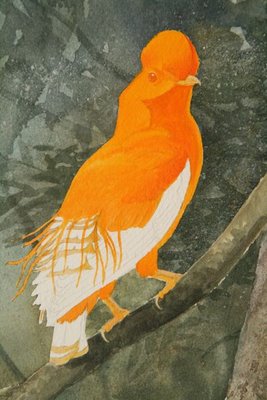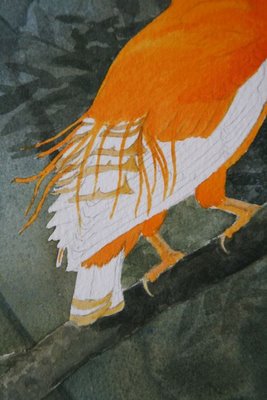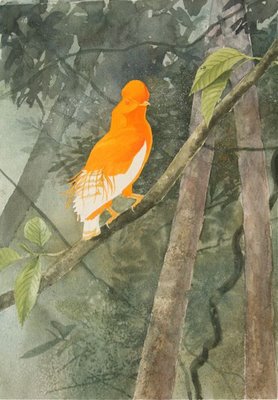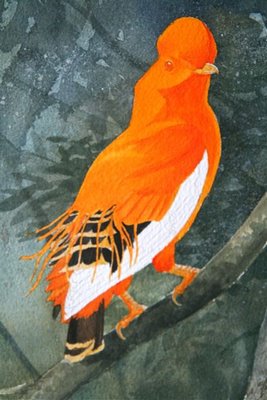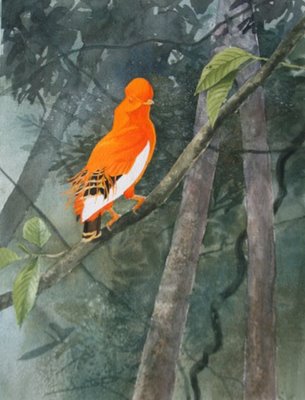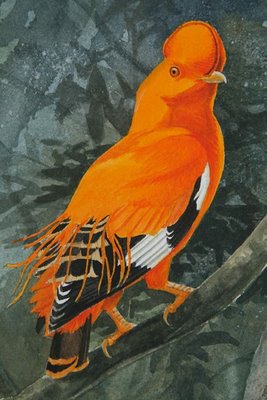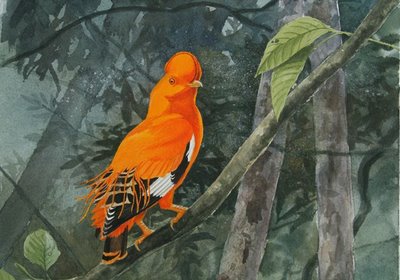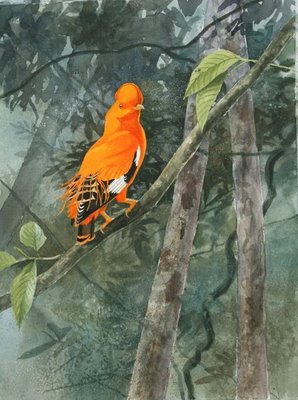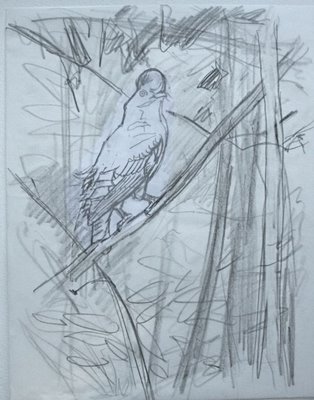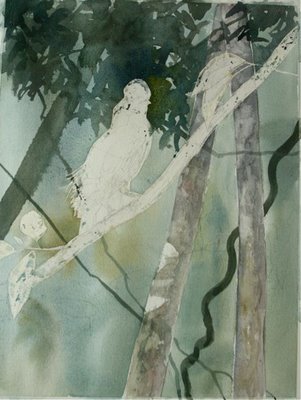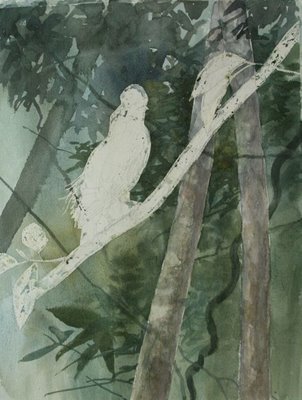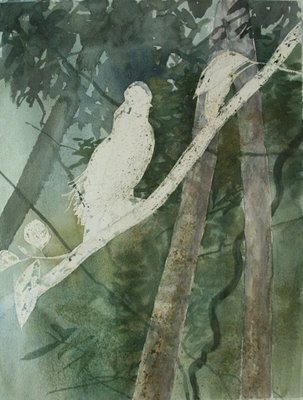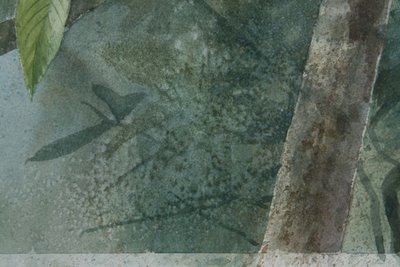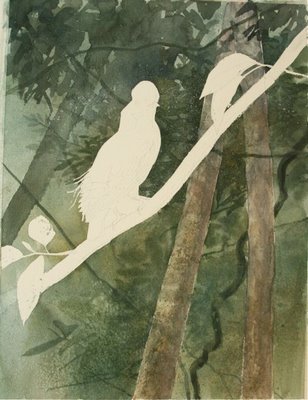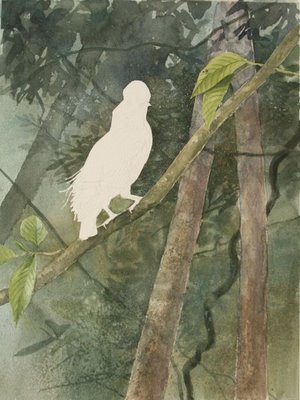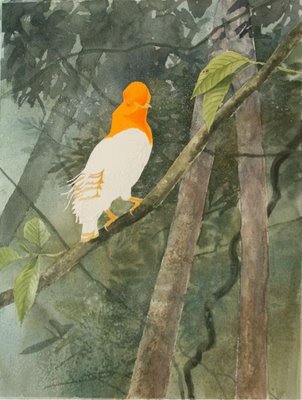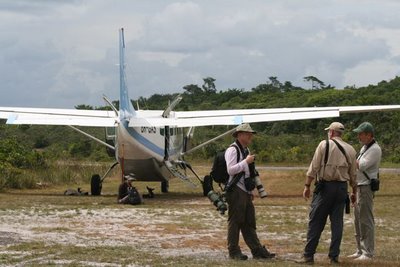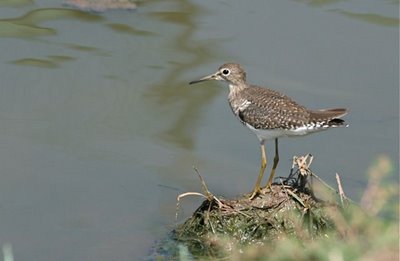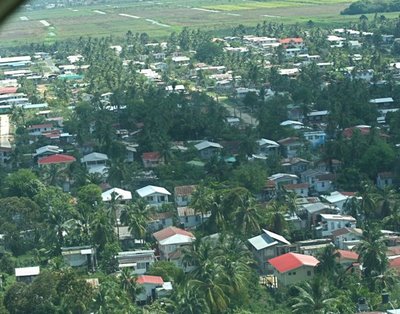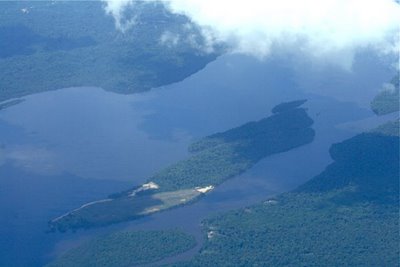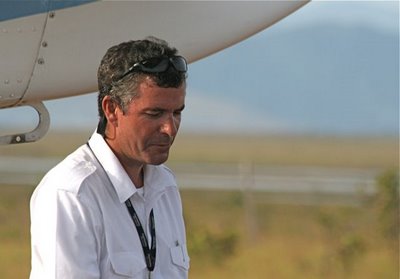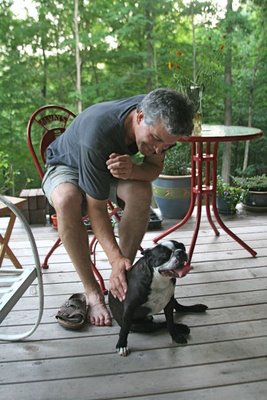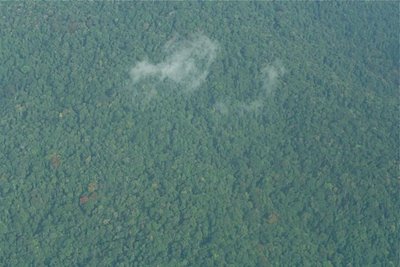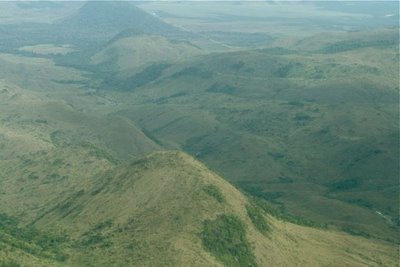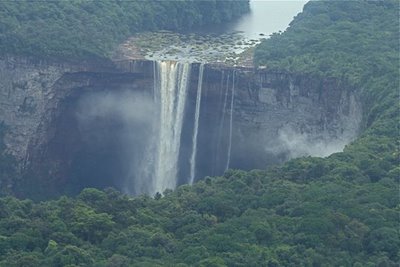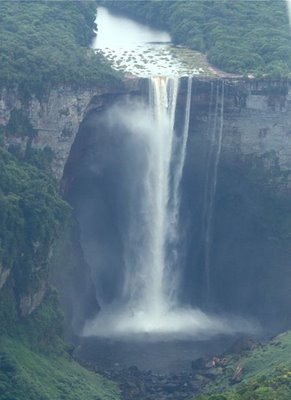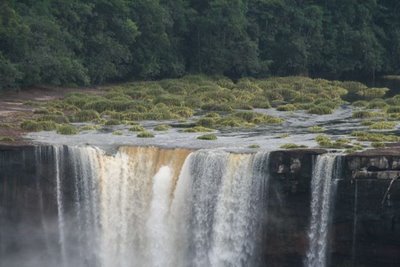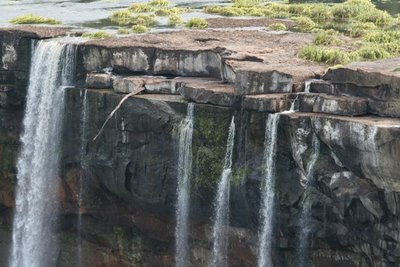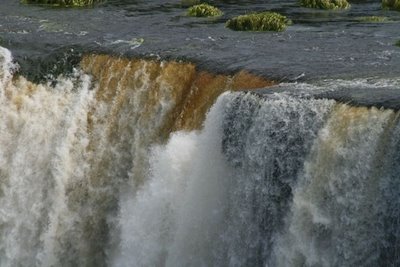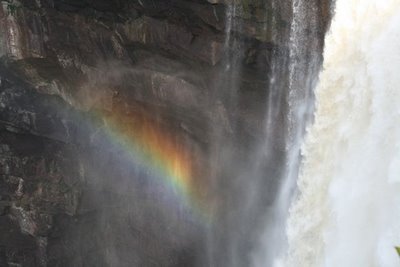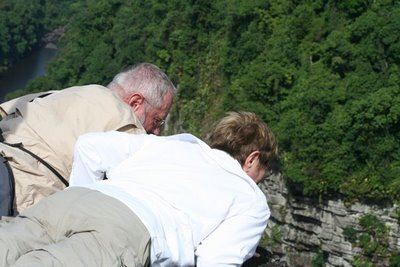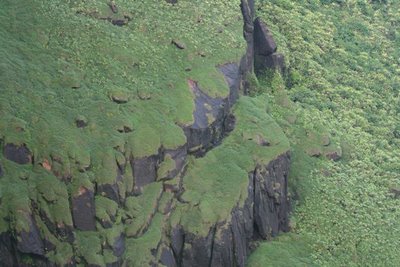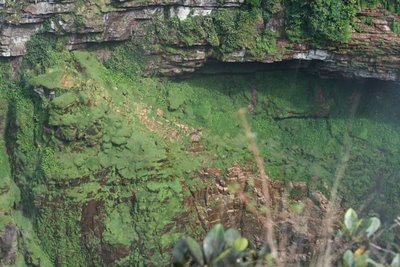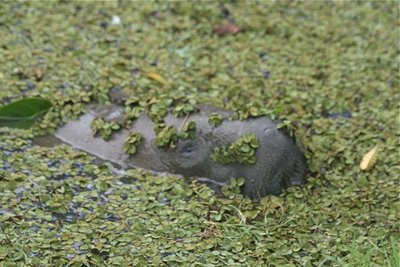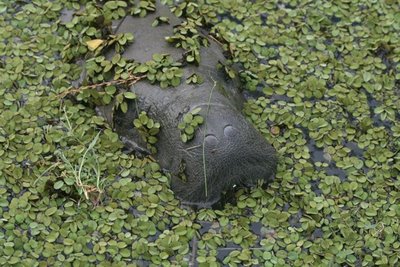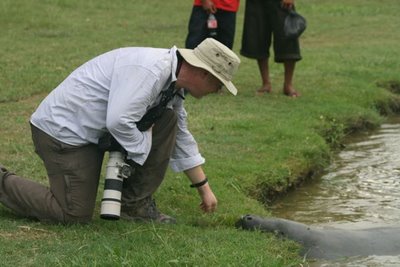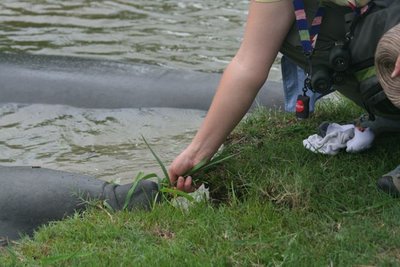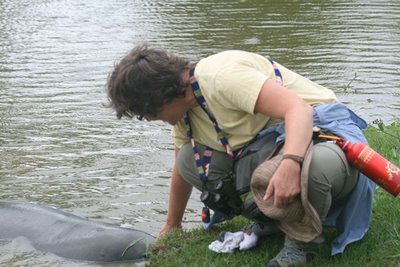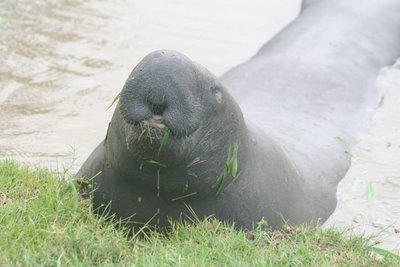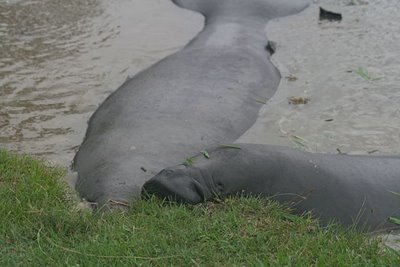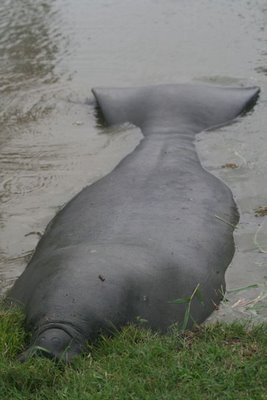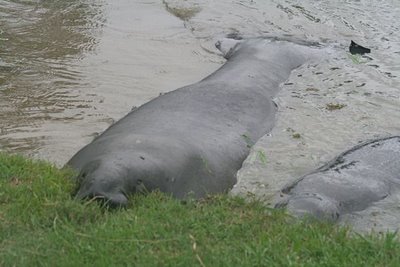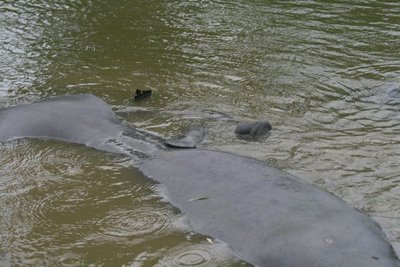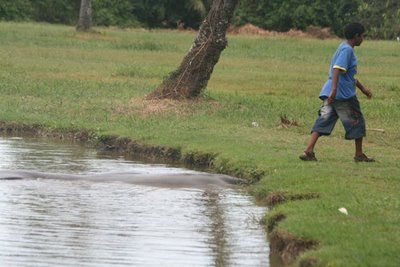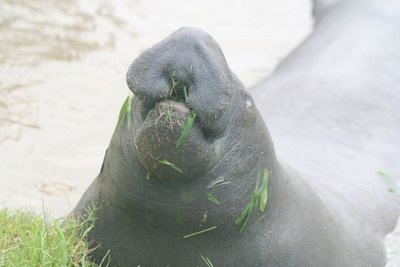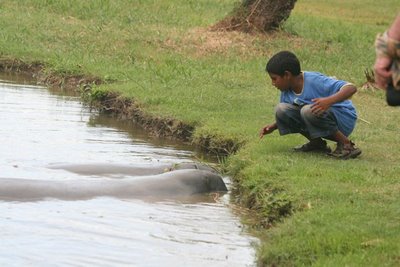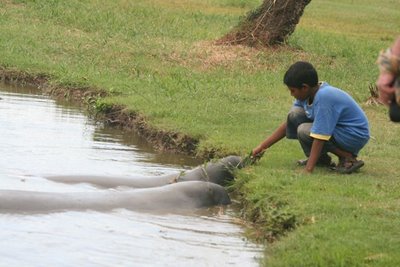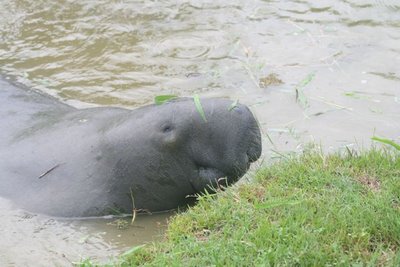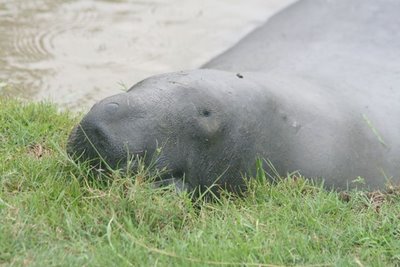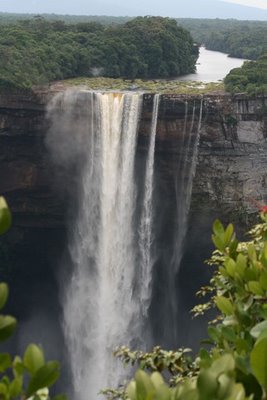
The falls held us in its thrall as we wolfed down the best meal of the trip-homemade Indian curry wraps, still piping hot, wrapped in foil. Nothing tastes better than good hot food, outdoors.
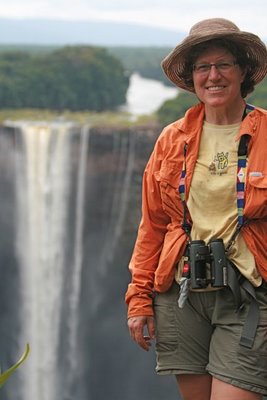
Life IS good. Even at 90 degrees and who-knows-what humidity. It was SO HOT.
Kaieteur Falls is not just beautiful. It's also a brewery for biodiversity. Think 20,000 species of plants on the Shield. No wonder I had not the faintest clue what I was looking at most of the time.
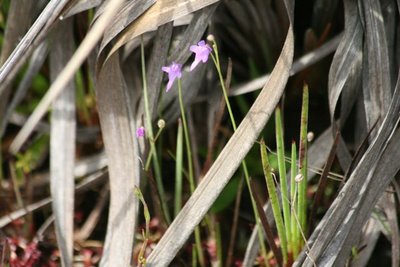
I think these tiny purple jobs were orchids, but...
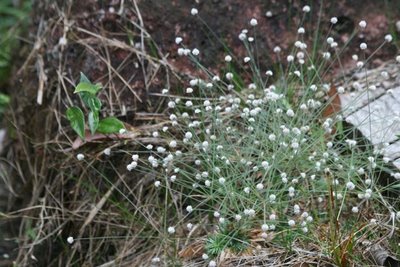
who knows what this little grassy but not grassy pompom thingy could be? It's weird for a Science Chimp to look at something and not even be able to get it down to family, much less genus or species. Caryophyllaceae? Beats me.
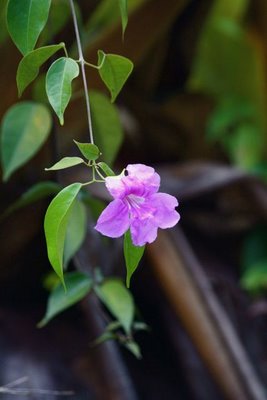
Bignoniaceae? Dunno. Pretty vine, though.
It's also sort of fun to be forced to shrug and appreciate a strange plant without naming it...for awhile. This one was blooming, innocent of leaves or anything but a golden flower, on the forest floor. Huh?
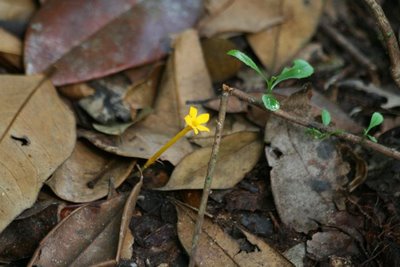
My inner Chimp was fretting badly on this trip, wanting to know, wanting to know.
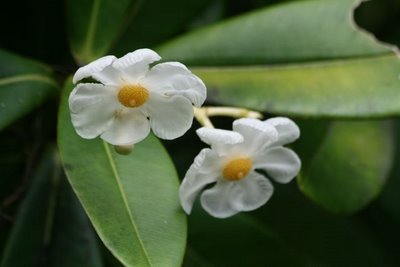
Dunno. Arggh. A huge rhododendron-like shrub with very un-rhody flowers, reminiscent of those of the mayapple. For all I knew I was looking at something that occurs nowhere else.
Like these CARNIVOROUS BROMELIADS. Yes. I mean, what gives with a carnivorous bromeliad? See how it's yellow-- has very little, if any, chlorophyll? Doesn't need it--it's eating bugs.
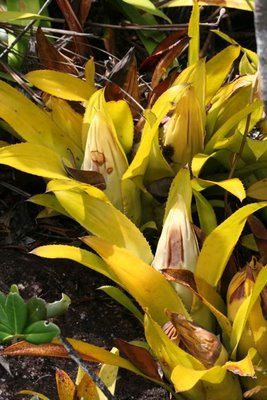
I think I was told that they occur nowhere else in the world. How cool is that, to see such a rare endemic, that makes its living like no other bromeliad?
I knew these were sundews and damselflies. Whew. Good to know something, no matter how small.
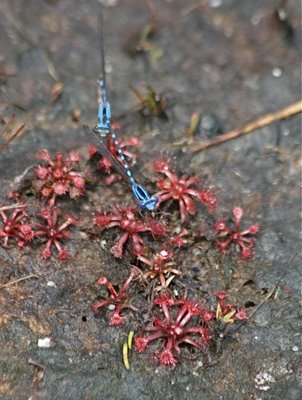
I just wanted to put a name on everything. Is it any wonder daughter Phoebe's middle name is Linnea, for Carolus Linnaeus?
From the air, I saw the strange golden leaves of a bizarre plant, and wondered aloud what it could be, growing in such profusion near the falls. Fortunately we were able to ground-truth the sighting with a good hike through the odd low forest around the falls.
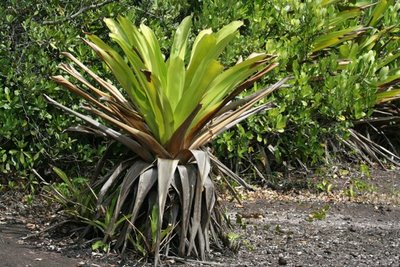
The mystery plants were tank bromeliads
Brocchinia micrantha, only the world's largest bromeliad! Yeeps! They were beyond huge. Here are some people for scale.
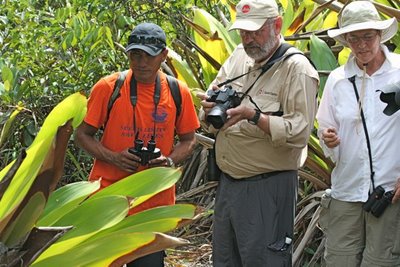
And they grow only here, at Kaieteur Falls.
But it got better. In the rainwater caught in the bromeliad's leaf junctions were tiny frogs--here's a female or juvenile.
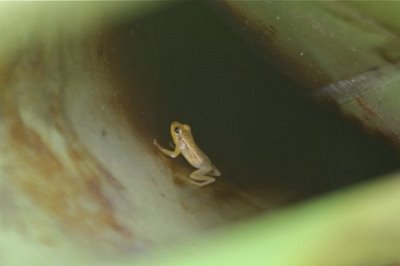
They were golden poison-dart frogs
Colostethus beebei. These entrancing creatures live their entire lives in the pools in tank bromeliads--egg, tadpole, adult; egg, tadpole, adult. Amazing.
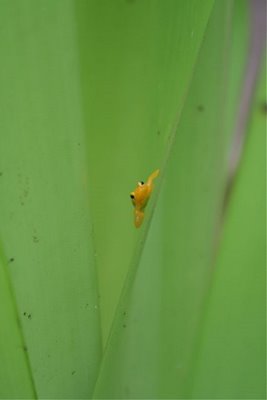
Because it showered several times during our hike, I understood how they could accomplish this. The enormous slick bromeliad leaves channel the rainwater down to their bases, where it sits and accumulates all kinds of detritus along with frog tenants. This is what nourishes the plant. I watched in fascination as the leaves caught rain and ran it into their "tanks." Every plant had at least one frog, some many more. How I wished Liam and Phoebe had been along to find frogs in each plant--it would have been like an Easter egg hunt for them.
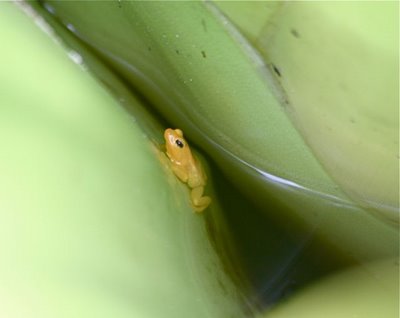
But don't touch--they're highly toxic! How can something so appealing be so poisonous?
About thirty miles up the river live 500 members of the Patamona tribe. The falls is named for Chief Kai, who, legend has it, went over the falls in a canoe, sacrificing himself to the gods, to save his village from invasion. The Patamonas will likely be instrumental in any ecotourism that goes on in this undeveloped, pristine place. It was amazing to me to see such a stunning natural wonder, such a diverse ecosystem, left so unspoiled and untrammeled. There are no developed roads; you can only get there by plane. And the single accommodation near the falls is just an open shanty with a few hammocks hanging in it. You can see its red roof in this picture. No skyscrapers, no casinos, no condos...just a shanty.
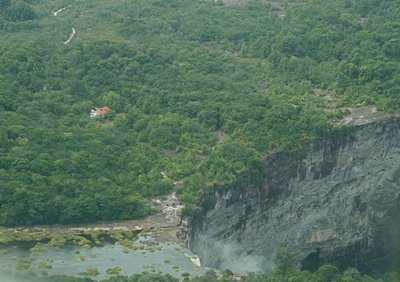
That made my heart sing, but I also wondered how this place would be preserved if people can't get to it to appreciate and study it, to stay there and soak up its beauty and wonder. We were on the ground floor, no, the basement of ecotourism here, looking at what might be. I felt like an early explorer beholding Yellowstone for the first time, knowing that people would want to see it, and in the next thought wondering what would become of it when they did.
Labels: carnivorous bromeliad, ecotourism in Guyana, endemic plants of Guyana, golden poison dart frog, Guyana, Kaieteur Falls, tank bromeliad

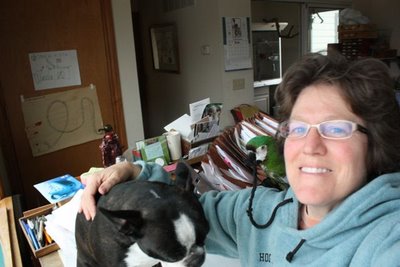 Charlie is busy ruining the cord to my hoodie. Krounchkrounchkrounchkrounch.
Charlie is busy ruining the cord to my hoodie. Krounchkrounchkrounchkrounch.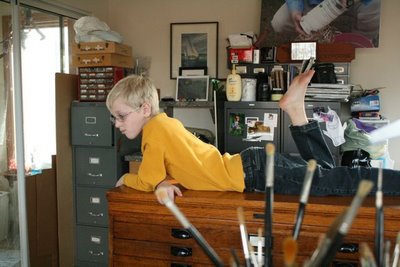 Liam on the flatfile.
Liam on the flatfile.